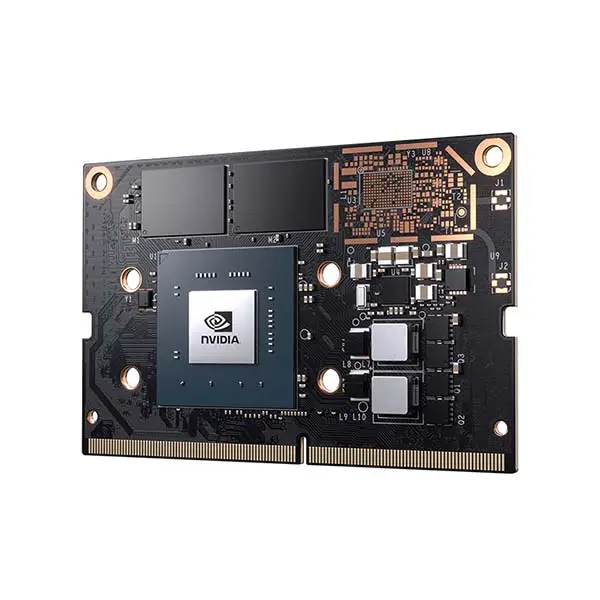Introduction
The NVIDIA Jetson Nano is an entry-level AI computing platform designed to make AI and machine learning accessible to students, hobbyists, and developers on a budget. Launched to democratize AI development at the edge, the Jetson Nano provides a compact, affordable, and user-friendly solution for learning, prototyping, and small-scale AI projects. Here’s an in-depth look at what makes the Jetson Nano an excellent choice:

Features
- Compact Design:
- The Jetson Nano is a small form factor board, roughly the size of a credit card, making it ideal for projects where space is at a premium.
- AI Performance:
- Powered by the NVIDIA Maxwell architecture GPU with 128 CUDA cores, the Nano can deliver up to 472 GFLOPS of performance, suitable for running smaller AI models.
- Memory:
- Comes with 4GB of LPDDR4 memory, providing enough space for basic AI models and applications.
- Versatile I/O:
- Equipped with interfaces like USB 3.0, Gigabit Ethernet, HDMI, DisplayPort, MIPI CSI camera inputs, and GPIO, allowing for connectivity with various sensors, cameras, and peripherals.
- Power Efficiency:
- Designed to run on 5W, making it suitable for battery-powered projects or low-power edge AI applications.
- Real-Time Capabilities:
- Although not as advanced as higher-end Jetson modules, it still supports some real-time processing for simple control tasks.
- Security:
- Includes basic security features like secure boot to ensure system integrity.
Applications
- Educational Projects:
- Perfect for teaching AI, machine learning, and robotics due to its affordability and ease of use.
- Hobbyist Projects:
- Suitable for DIY projects involving AI, from home automation to small-scale robotics.
- IoT Devices:
- Can power smart home devices, IoT sensors, and other edge AI applications where performance and cost-effectiveness are key.
- Entry-Level Robotics:
- Ideal for robotics enthusiasts or small robotics projects requiring basic AI capabilities.
Development Ecosystem
- JetPack SDK:
- NVIDIA provides JetPack, which includes the Linux for Tegra operating system, CUDA, cuDNN, TensorRT, and a range of libraries and tools for AI development.
- AI Framework Support:
- Supports popular frameworks like TensorFlow, PyTorch, and others, allowing developers to leverage pre-trained models.
- Community and Support:
- Access to a supportive community, extensive documentation, and NVIDIA’s developer forums.
- Ease of Development:
- Designed with beginners in mind, offering a lower entry barrier for AI development.
Challenges and Considerations
- Performance Limitations:
- While impressive for its price and size, the Nano has performance limitations compared to higher-end Jetson modules, suitable for less demanding AI tasks.
- Memory:
- The 4GB memory might limit the complexity of AI models that can be run without optimization.
- Development Complexity:
- Although designed to be user-friendly, there’s still a learning curve for those new to AI or embedded systems development.
- Cost:
- While more affordable than other Jetson modules, it still represents an investment for hobbyists or educational settings.
Conclusion
The NVIDIA Jetson Nano is a game-changer for AI development at the edge, offering high-performance AI capabilities at an entry-level price point. Its compact size, power efficiency, and support for AI frameworks make it an excellent platform for learning, prototyping, and developing AI-driven projects. The Jetson Nano democratizes AI, making it accessible to students, hobbyists, and small businesses, allowing them to explore and innovate in fields like robotics, IoT, and smart devices. Whether for educational purposes, hobbyist projects, or entry-level commercial applications, the Jetson Nano is a stepping stone to the future of intelligent systems, enabling anyone to start their journey into AI and machine learning.
